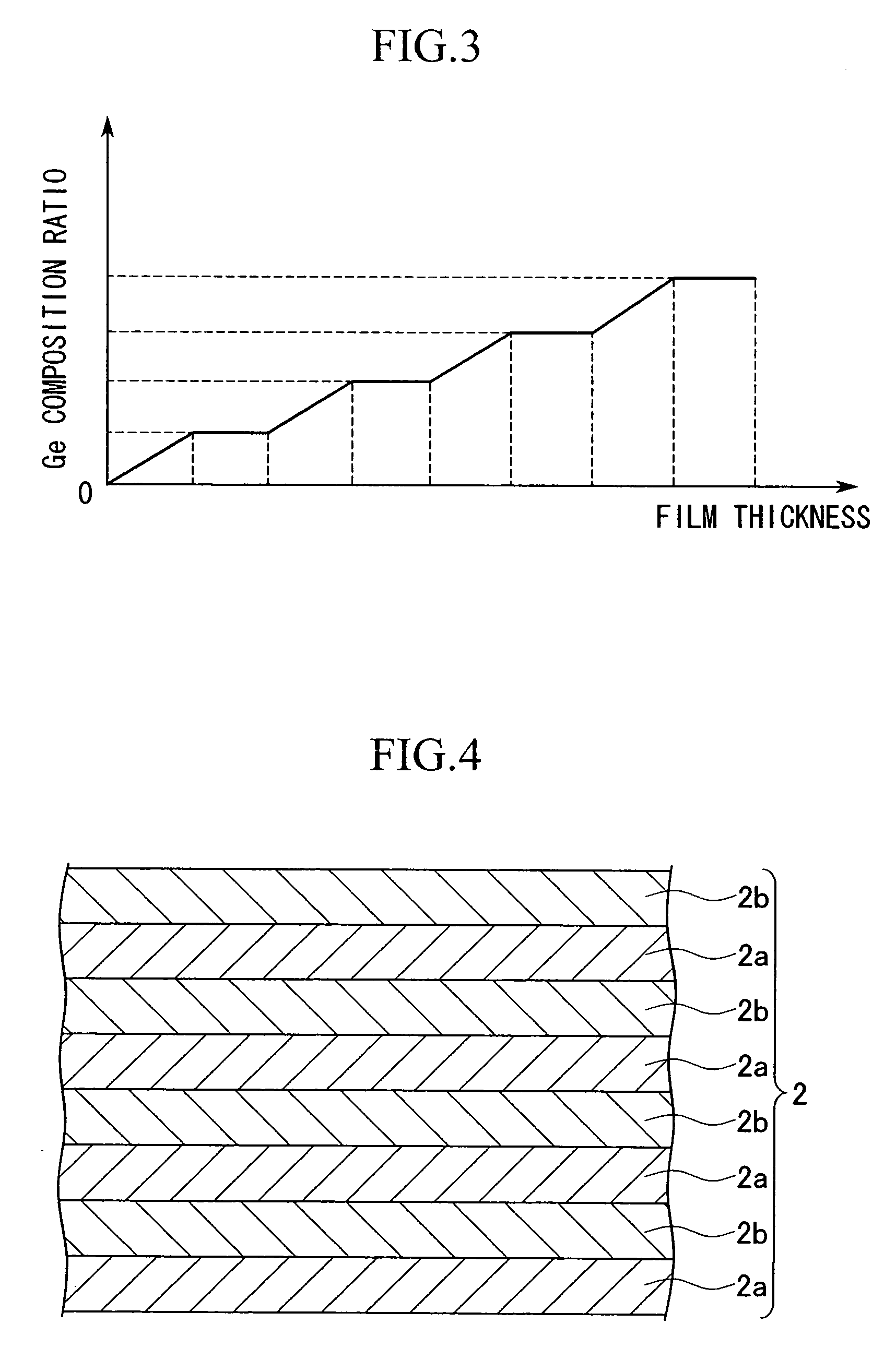Method for producing semiconductor substrate and method for fabricating field effect transistor and semiconductor substrate and field effect transistor
- Summary
- Abstract
- Description
- Claims
- Application Information
AI Technical Summary
Benefits of technology
Problems solved by technology
Method used
Image
Examples
Example
Roughness Measurement 2-2 (Comparative Example: Wafer Immediately After Re-deposition Following Polishing)
RMS: 1.91 nm
P-V value: 19.02 nm
Roughness Measurement 3-1 (Example: Wafer After Mock Heat Treatment)
RMS: 0.95 nm
P-V value: 10.36 nm
Roughness Measurement 3-2 (Comparative Example: Wafer After Mock Heat Treatment)
RMS: 2.27 nm
P-V value: 19.57 nm
[0116] From the above results, it is seen that, compared with the comparative examples, the examples undergo extremely little change in RMS values after the mock heat treatment, and have satisfactory surface states.
[0117] That is, in this examples, it is shown that the worsening of micro-roughness due to thermal history is greatly improved compared with the comparative examples. It is known that in strained Si the micro-roughness strongly affects degradation of positive hole mobility, and it is clear that this invention makes possible an epochal improvement in the production of p-type transistors employing strained Si wafer...
PUM
| Property | Measurement | Unit |
|---|---|---|
| Thickness | aaaaa | aaaaa |
| Ratio | aaaaa | aaaaa |
| Semiconductor properties | aaaaa | aaaaa |
Abstract
Description
Claims
Application Information
 Login to View More
Login to View More - R&D
- Intellectual Property
- Life Sciences
- Materials
- Tech Scout
- Unparalleled Data Quality
- Higher Quality Content
- 60% Fewer Hallucinations
Browse by: Latest US Patents, China's latest patents, Technical Efficacy Thesaurus, Application Domain, Technology Topic, Popular Technical Reports.
© 2025 PatSnap. All rights reserved.Legal|Privacy policy|Modern Slavery Act Transparency Statement|Sitemap|About US| Contact US: help@patsnap.com



